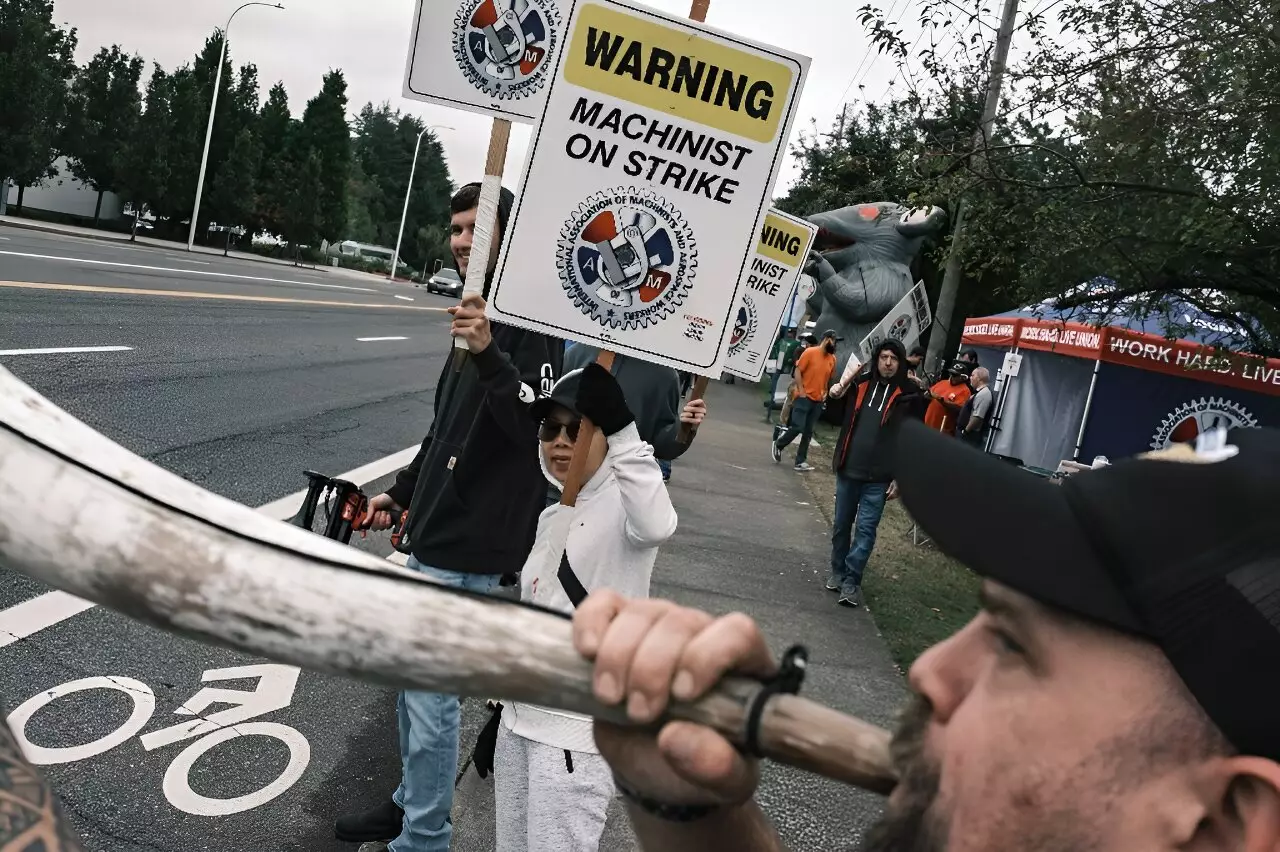The ongoing labor strike at Boeing highlights significant tensions between the aerospace manufacturer and its employees, represented by the International Association of Machinists and Aerospace Workers (IAM). As negotiations have come to a standstill, approximately 33,000 workers in the United States have walked off their jobs, most notably impacting assembly lines for the highly anticipated 737 MAX and 777 aircraft. This strike, which began on September 13, showcases the frustration and determination of workers who feel their demands are not being adequately recognized or addressed by Boeing.
Recent statements from both the IAM and Boeing indicate a clear divide in negotiations. The IAM announced that discussions with Boeing have “broke off,” indicating that no further talks are scheduled currently. This reflects a concerning trend for workers, emphasizing the critical issues at stake that led to such widespread labor action. Boeing, however, has expressed a desire to resume negotiations, committing itself to negotiating in good faith. The company’s position attempts to frame them as willing participants in resolving the ongoing labor dispute, but the striking workers’ experiences suggest a different narrative.
Central to these negotiations are several key demands from the IAM, including substantial wage increases and pension plan modifications. Boeing’s recent proposal included a significant wage hike of 30% for striking workers, alongside the reinstatement of an annual bonus; however, the IAM responded with disappointment, arguing that this offer falls short of their expectations. Many workers view the pension plan as a crucial part of their compensation, highlighting how Boeing’s reluctance to unfreeze the defined benefit plan has become one of the sticking points in the negotiation process. As striking workers continue to demand better pay and benefits, the unresolved status of these negotiations increases the likelihood of prolonged disruptions in Boeing’s operations.
The strike at Boeing represents not just a labor dispute, but also a rich tapestry of larger issues within the American workforce. The demands for livable wages and satisfactory working conditions echo a larger national trend where labor unions are more vocal in advocating for the interests of their members. As the union asserts it has engaged in “frank discussions” but made minimal progress on essential issues, it becomes clear that the labor landscape is evolving. Workers are more willing to push back against employer practices they perceive as exploitative or insufficient.
Looking ahead, both Boeing and the IAM must find a way to bridge their current divide. The resolution of this strike will not only impact Boeing’s output and financial health but will also set precedents for labor relations across industries. Striking workers and their union leaders remain steadfast in their stance, emphasizing the need for respect and fair treatment in their negotiations. As the industry watches closely, it will be a defining moment for labor relations, potentially shaping the future of negotiations between labor unions and large corporations in a post-pandemic economy.


Leave a Reply